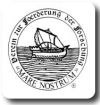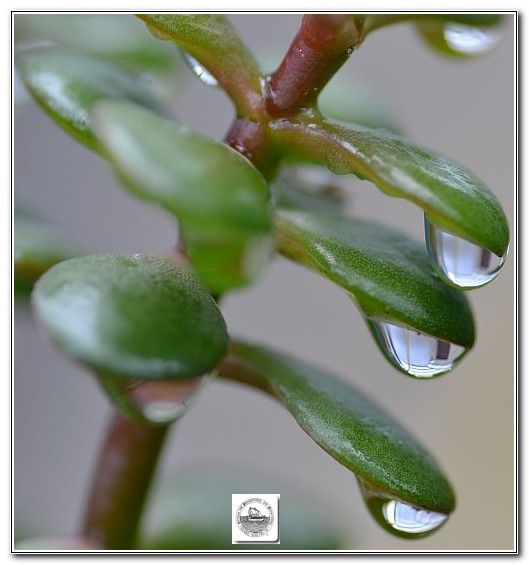



12.01.2001
TECHNICAL REPORT ON
THE EYE PROTECTION PROPERTIES
OF CARBON® MELANINA LENSES
PREFACE
Through its our research centre, VFF "Mare Nostrum®" e.V. we have
carried out a study on the use of sunglasses containing Carbon® Melanin
lenses.
We have made custom eye-glasses used solely by our
scientific staff inside our VFF Institute, without any commercial
scope.
The study was conducted in pecific weather use conditions (strong solar
luminosity and sun reflection from snow and ice conditions).
The results have shown the exceptional effectiveness of the of Carbon® Melanin filter.
The custom eye-glasses have a very particular shape and where adapted
to the users. In this way the lens performance was increased and gave
optimum results in a specified application.
The mounting of said eye-glasses consists of three parts:
 |
 |
| Filter A |
Filter B |
 |
 |
| Filter C | Filter D |
PART A
Front part containing 4 pcs of Carbon® Melanina Lenses doubled mounted lenses (2 left & 2 right). The first manufacturing step was the hand-milling of lenses with diameter of 70mm , thickness 1.8mm/ base 6, cutting shape of the earth ball with flattened poles.
As
we do not build ophthalmic devices every day we had to face some
difficulty in
cutting the lenses to shape.
We also were under time-pressure as the
finished
eye-glasses testing should start as early as possible.
The difficulties in
working with such lenses were due to the small thickness of only 1.8mm
(in some cases the lenses broke during the first milling step).
Besides, we noted that the dust particles resulting from the milling,
can damage the lenses within an area of 1mm from the milling point.
This ismost probably due to the use of wrong cutting tool.
However, we managed
to resolve this problem. The next step was cutting the lenses edges to
fish-bone shape in order to allow its fixing to the mounting with a
special sealing adhesive. The mounting shape was purpose-built to allow
air flow also in bed weather conditions wind and dry snow dust.
ADHESIVE used:
Master Bond Grade EP-29-LPSP (made by TRACON Inc. – USA)
- Cryogenic Version / NASA approved
- Mix ratio 100/68
- Viscosity 667 cps
- Stabilizing time 6g at 25°C, 55% rH
- High resistance to chemical agents
In the manufacture of the mounting provided by us we employed a number of resins and titanium parts. The mounting design is not traditional.
PART B
Upper protection made with
four Carbon®
Melanina Lenses (2 right & 2 left), cut in the same way to see
above but
with the shape of spherical slices.
This particular structure was
necessary
because the eye-glasses have to offer a double protection against
double
reflection.
This reflection depends not only from the sunlight during day-time on a certain altitude but it depends also from the colour of clothes and the cap that the person wears (usually white-grey).
The angle determined for calculating the spherical slice was adjusted to face and eye-socket of the individual eye-glasses users. Suche angle range is from 1.25° minimum to 2.6° maximum.
The eye-glasses were so
equipped with
an upper inclined cover in additional to the inclined position of the
opposite
lenses.
This guarantees the total elimination of any kind of reflection
wherever
a person wears such eye-glasses.
PART C
Lateral protection consisting of two Carbon® Melanina Lenses see above (1 right & 1 left) cut to shape from lenses base 6.
This lateral protection was purpose-built to match the user’s orbital-parietal shape. Moreover, we also considered the muscle variation effect on the mounting’s poles and to face movements of persons wearing the eye-glasses because the lateral protection must always avoid the entrance of light not filtered by the Carbon® Melanina Lenses.
The lenses shape reminds you of the section of a conus surface with a conus “a” value ranging from 4.8cm to 5.8cm.
The mounting’s hinges were fixed in a point that was reinforced with two stripes of laminar silicon of 1mm thickness.
As result of this special treatment the eye-glasses overall weight increased up to an average weight of 131-153 grams.
Our current research aims at further improving the lenses positioning and at designing new mounting frames.
INFORMATION
The persons that took part in the test, had the following general features:
| Male ( Age ) |
32 – 58 years |
| Weight |
normal weight type with factor 23.5 |
| Food |
normal protein type, limited iodine salt use, balanced
nutrition, paying attention to the dynamical-specific action of food’s active substances, avoiding antagonism among them which would result in caloric losses. |
| Info 1 |
Non smoker |
| Info 2 |
No alchool |
| Factor |
Sensitivity to dust and wind, chronical eye irritation caused by sun light reflection |
Below you will find a list of impaired health symptoms the test person suffered from, as well as the evolvement of such symptoms under extended daylight exposure.
As one can see, the symptoms in some cases were notably reduced and in a number of cases they disappeared at all, thanks to continued use of Carbon® Melanina Lenses.
Next to the symptom description, you will find the explanation of reasons that led to eye-sight improvement of the test persons.
We underline that the symptom appeared before using the eye-glasses with Carbon® Melanina Lenses
3 PERSONS SUFFERED COMMONLY FORM:
Frequent eyeball reddening with increased lachrymation sometimes only of one eyeball.
Two person after 1 hour’s outdoor work in extreme weather conditions (average temp. –39°C / wind 65 Km/h / full sunshine) had red eyes and sometimes thickened blood capillars with led to disturbed eye-sight called “FOG” effect.
One of these three persons was astigmatic at one eye at a level of 6/10 and had focussing difficulty when using telemetring instruments, especially in the sunshine.
In this case the eye has to make much efforts to read e.g. labels of different colours. The eye gets tired and is subject to lachrymation which leads to painful ice building when temperature is very low. Thus the person has no other choice than returning to the camp.
All the 3 persons and in particular the astigmatic one, after continued use of Carbon® Melanina Lens eye-glasses for a week, did not have such symptoms anymore.
SHORT-SHIGNED PERSON (-8 DIOPTERS)
This person was in charge of data processing at the base camp and did not carry out outdoor tasks (as he wears special contact lenses). This person monitored the meteorological computers and thus had to stay many hours of the day near shielded terminals with large dimensions of 21”.
Due to the chromatic variety of the colour monitor, the operator complained about tired eyes and difficulty in concentrating himself. He often had to make a break every 10 to 12 minutes of work.
The operator was given a pair of normal eye-glasses with Carbon® Melanina Lenses. He confirmed that the colours did not cause him any longer eye tiredness and that his eye-sight was improved and relaxed.
PERSON WITH XEROSIS AFTER EFFECTS
This person was effected by a disease resulting in diminished pigmentation. Some time ago (approx. 8 month earlier) the person had suffered from a congiuntiva problem i.e. a congiuntiva degeneration called Xerosis, secondary type. This lead to cheratinization of the surface layers and a dry, white look.
The reason for this was a Trachoma due to “Chlamydia Trachomatis” which had damaged the mucous membrane but fortunately not the cornea.
The contagion had happened during a previously mission in hazardous area.
The therapy had consisted mainly in antibiotics but as an after effect the person was for a long time photophobic and extremely sensitive to the day-light.
The use of Carbon® Melanina Lenses eye-glasses led to a quick improvement of this situation. The eye gradually got used to an illumination level that was more acceptable and at the same time did not alter the colours nor was it too bright although there was sun reflection caused by the snow.
PERSON WITH INCREASE of PHOTOPIGMENTS
High level of the photopigment “Iodopsina” which in full daylight moments leads to exceeding eye-sight brightness accompanied by vision damage caused to the macula.
In this case use of Carbon® Melanina Lenses helped the person to overcome the negative effects. The person was able to stay outdoor fulfilling his work cycle of approx. 1 hour in the daylight.
CONCLUSION
Our technical analysis and experience regarding the Carbon® Melanina Lenses are still in course. The results known as of today are summarized above. We did not focus on the chemical analysis of such lenses which are made of micronized carbon and synthetic melanin.
We are not interested in knowing if there are other synthetic substance employed, like “Riossalene” or “Metossalene”, in combination with micronized carbon.
Our Research Center just wanted to test and evaluate the real efficiency of these special lenses
For us it was important to compare the data declared by the manufacturer regarding the light absorption (UVA-UVB and blue-violet light).
The final results of our tests not only confirmed the values officially listed by the manufacturer, but exceeded also the expectations of our technician.
It is worldwide general knowledge that damage to eye-sight is caused by interaction between the cumulative principle (exposure time + energy) and exposure to invisible radiation like UVA, UVB and to visible spectrum from 505 to 280 nm.
We can state without any doubt and due to our test carried out not only in the labs but first of all in the field, as follows:
1. The Carbon® Melanina Lenses allow an optimum outdoor daylight eye-sight even in the case of bright sunshine and reflection. The lenses do not cause alteration of colours but allow a better natural colour distinction.
2. The radiation absorption level ranging in invisible spectrum and in particular from 285 to 380 nm (UVB-UVA) corresponds perfectly to the values declared by manufacturer of said lenses.
3. The radiation reduction level of visible spectrum of blue and violet colour, up to approx. 505 nm, correspond to the values declared by manufacturer, with the exception of blue colour at 490-505 nm (thus near to green) which is mainly minimized with an absorption factor measured by us of 98% declared by manufacturer
4. Eye-sight in the visible spectrum is relaxed and does not cause tiredness, especially with bright sunlight and reflection from ground (water or snow).
5. We recommend the use of such lenses not only for persons of an age of 30 or above, but for all persons in charge of outdoor works and subject to bright sunlight and radiation. We recommend such lenses also for operators in the mountainsand at the seaside where sun radiation is high, as well as in tropical areas.
6. There in no doubt that at age of 25 ( some say it is even earlier) the natural Melanin level in the human body begin to fall i.e. our natural protection gets less. On the other hand, the sun radiation level since 25 years has increased. For this reason we recommend the use of Carbon® Melanina Lenses also for the youth and in particular for the children, especially in the summer in the mountains or on the beach. We must remember that our body accumulates the negative impacts and this principle is valid for all ages of the lifetime. Our eye are very precious. Our body cannot modify quickly itself whenever man damages the environment and create dangers for our health. Our body cannot provide that quickly for a natural defence response. It us up to us to help our body and prevent diseases as much as we can.
Innovations and scientific findings must be to benefit of all mankind and improve quality of life although unfortunately man contributes to damage irreversibly and does not respect the cycles of nature.

12.01.2001
| HOME |